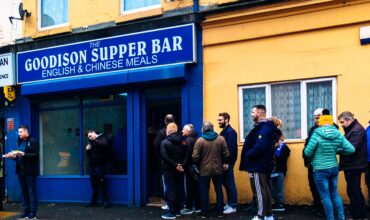Just like it is important to know your customer base accurately in order to develop marketing campaigns, it is also necessary to understand the different types of customer loyalty in order to implement insight-driven loyalty programs. Loyalty among different customer groups differs in motivation, intensity, and nature.
Understanding different types of customer loyalty help you develop loyalty programs that are cost-effective and result-oriented.
Here are some of the most common types of customer loyalty:
1. Opportunistic loyalty
This is the kind of loyalty that is motivated by customers’ convenience or a certain opportunity. For example, some people purchase at certain supermarkets repeatedly not because they feel loyalty towards it, but because it is closer to where they live. Others may shop at the same supermarket because they are just used to doing so – these kinds of customers are often the weakest links. When presented with a more attractive place to shop with similar benefits, they simply walk away.
It is these kinds of customers that you need to work hardest with so that you retain them and give them new reasons to keep coming back. Different types of customer loyalty programs developed carefully based on insight will help convert a large portion of these customers towards authentic loyalty.
2. Price-driven loyalty
Many customers shop at the same store because they offer cheaper prices, discounts, and loyalty incentives. For example, some customers may get a haircut at a salon every month because they can redeem their coupons at a discount. However, this kind of loyalty is not always consistent and is at risk of being lured away by competitors.
To retain price-conscious customers, it is important to offer products and services they normally wouldn’t buy, at a price they can afford. Loyalty management tools can help identify products and services that are most appealing to a certain customer, but out of reach for them. Then, the tool can give them an opportunity to try them for free, at a discounted price, or by redeeming points.
3. Necessity-driven loyalty
Customers who are driven by a necessity to shop at your location are the easiest to lose. They often buy from your business because they do not have any other options. The moment they see a more attractive option, they will be happy to bid you goodbye. With a little effort, necessity-driven loyalty can be converted into authentic loyalty.
Use insight to keep track of competitors elsewhere, even if they are not your rivals at the moment. Strive to offer better products and services than them, and put a loyalty program in place that simply is no match to theirs. Of course, this is only possible when you use a loyalty management tool with built-in artificial intelligence.
4. Emotion-driven loyalty
Customers often purchase from a store repeatedly because of emotions – both positive and negative. A group of customers may choose a certain nail salon because it makes them happy. A few others may choose the same nail salon because they are anxious about hygiene standards elsewhere. Unfortunately, emotions are transient, and thus, emotion-driven loyalty is not long-lasting.
Value-driven loyalty marketing ensures that customers remain faithful despite how their moods twist and turn. In other words, bringing tangible value to customers in the form of superlative products and services, plus carefully planned rewards helps retain them for the long haul.
5. Authentic loyalty
These are the kind of customers who are strongly convinced about the value your brand offers to them. They truly believe that purchasing your products or services makes a positive change to their lives, and they feel a sense of loyalty that is not driven by reward programs, emotions, necessity, or opportunities. It is an authentic relationship between customers and a brand of their liking, and it tends to last a very long time, as long as the quality of services or products does not diminish.
To help seal the bond and acknowledge the authenticity of the relationship, you can implement a members club. Think of it as your VIP list.
Every customer’s loyalty is potentially authentic
Different types of customer loyalty can be clubbed under one of these five categories. Insight-driven loyalty tools help customers to form a real bond with a brand, instead of being driven by emotions, necessities, price, and opportunities alone. In other words, even the weakest link is potentially a source of authentic loyalty sometime in the future.
Glue offers a variety of different programs: smb rewards programs, vape loyalty programs, nail salon loyalty cards ant others. All it takes to ensure this is a loyalty program that is built on insight, intelligence and personalized for your business.



